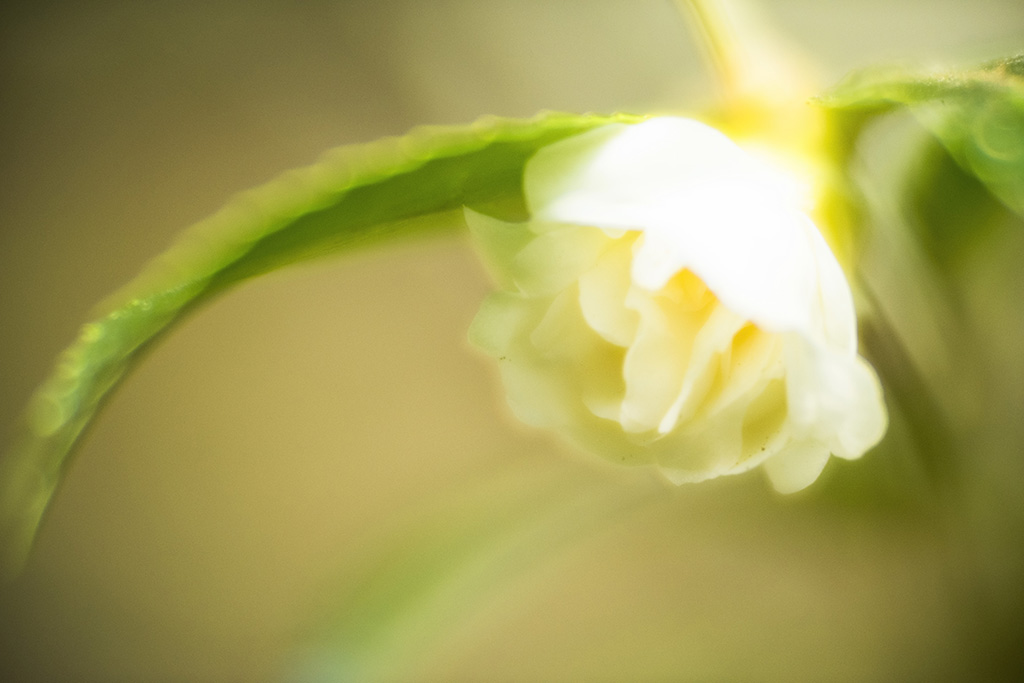“Hack away at the unessential.” ~ Bruce Lee
When creating close-focus and macro images, check your exposure, choose your aperture sweet spot given the subject and available light, compose with depth of field and foreground/background elements in mind… And then once everything else is the way you want it, including lens choice, focal length and distance to your subject, get to work fine tuning with your tripod.
What?
Yeah. Seriously.
Add mastering my tripod to the list of 2018 “WINS” I’ve racked up. Not that I’m done learning. But tripod positioning as an essential part of my creative process is now a true-believer journey for this photographer.
Especially for macro work.
Especially for the creative requirements of soft focus macro work, where what you don’t show of a subject is often more important than what you do.
Stop fiddling with your camera and lens settings, a video instructor insisted. Set things up exactly the way you want them, and work your tripod.
Which I did. To haphazard results, initially.
Until I forced myself to slow down and learn all the parts and pieces of the gear I had—not to mention the gear I REALLY needed, if I was going to get the most out of my camera while tethering it to a carbon fiber octopus hell bent on driving me insane with all its bells and whistles, levers and balls and twisty-turning things.
You need an L Bracket mount. Oh, and a rail. And a sturdy, yet, flexible base so what you’re working with is solid yet easily adjustable.
Get a ball head. No, a better ball head than that, silly.
NO, a geared head. That’s what you need to achieve the most precise measurements.
There where times I wanted to toss that evil beastie, camera included, over the nearest cliff.
Why not just zoom in and out with the lens, move the base entirely instead of adjusting the legs or other elements (the rail and I still aren’t on speaking terms) so the camera goes left and right, up and down, the way I wanted it?
Heck, just take the camera off the octopus and shoot hand held the way I always have?
But then, literally lying on the ground with tripod legs spread (center column gone) and the camera nearly sitting on the dirt (my base nonetheless stable, flexible, and uber adjustable), I started capturing images like this dawn-illuminated lady slipper.
And I began to see the light. Literally. Beautiful, still, light and soft focus results, from a hard-fought-for practice of intentionally separating my camera work from the step-by-step process of positioning my lens precisely where I needed it.
Nothing else changing, except how your tripod can get you closer or further away or tilted left and right, up and down, micro-inches here and there, until you’re absorbed in what you’re creating, becoming one with the composition…
Very new-age, Zen, right?
The result isn’t about taking one perfect image.
Not for me.
For me, it’s about working my way in, a subject to slowly revealing itself to me, once I’ve made other basic composition choices. How I want to handle light and depth of field and focus, etc., disappear. No other decisions remain, beyond what I’m seeing and how I can see more and reacting to this tiny world I’m blessed to be a part of for a few seconds, minutes, sometimes half an hour or so…
While my husband wanders away, wondering if I’ll ever find my way back to him, LOL!
You’ve made all those other “camera” choices. Now, it’s time to lean in and “see.”
What happens if you extend your back tripod leg just a bit to get a half an inch closer and angle slightly up and “crop” out the unessential and shift perception to isolate lines and curves and colors slowly coming to life.
Nope, now. Wait…
Just one more shift…
NOW!
Of course you’ll work with your camera and lens settings, too. As you go. Minor tweaks here and there.
But learning to work my way into an image using tripod micro-adjustments has been a revelation.
I’m tuning in, finally, to crafting a capture based on positioning alone.
I’m using the balance and stillness of my tripod as my solid base.
I’m giving myself time and support to explore and expand what my lens sees.
I’m creating something I never would have before. I’m no longer snapping the image first presented to me, as if I’m not really there at all.
Learn to create and fine tune with your tripod.
Not just for macro. This new skill set has enhanced my landscape work as well.
It’s lengthened my process, for certain, which slows me down and means I bring home fewer shots and cover less ground with each outing.
But what I do capture is transformative—something only I and meticulously interacting with the world around me could have created.
One micro adjustment after another (lying on the ground, covered in leaves and dirt and loving it), until, THERE.
I GOT IT!
Just the way I always dreamed I could.






